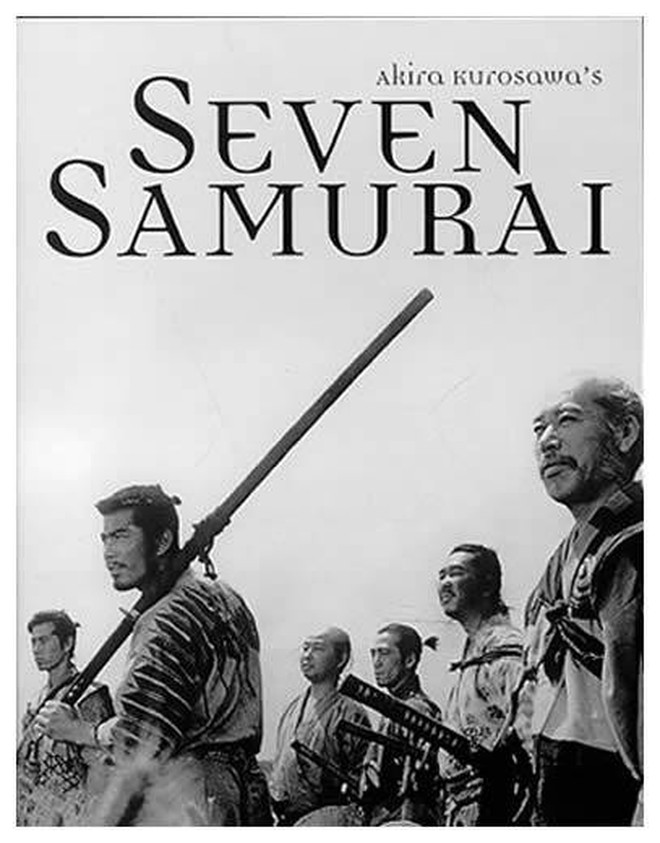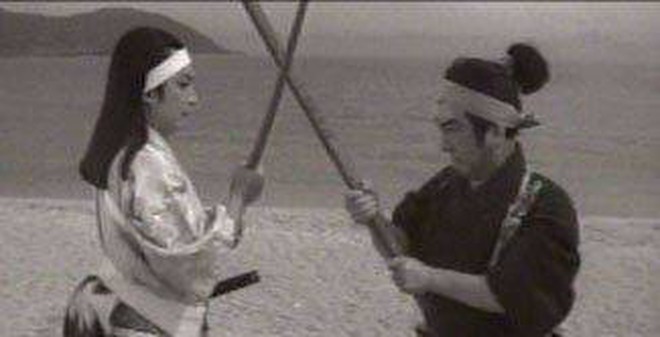
In Kurosawa’s film Seven Samurai, Toshiro Mifune plays the character Kikuchiyo, the seventh (and odd-ball member) of the seven samurai. For those not familiar with the film, the concept is that seven unemployed samurai (sometimes called ronin, literally “man of the wave”) are hired by a group of hapless farmers to protect the farmers’ village against a relentless band of marauders. Mifune’s character is shown hefting a sword so long that it has to be carried over the shoulder like a lance. See graphic, to the right. In more recent times, Japanese swords have classifications according to length, and the longest of samurai swords are called “nodachi.” Many would rightly say that the sword pictured qualifies as a nodachi.
There is a reasonable belief that a long sword is hard, if not impossible, to defeat owing to its reach. But sword lengths are relative. In the film Twilight Samurai and also in Seppuku (also known as “Hara-kiri”), much is made of a sword being too long to be used inside a dwelling–hence the personal sword, a shorter blade often called a wakizashi works better. In close confines a regular tachi or katana type sword risks colliding with a ceiling or walls. A shorter sword is the better bet in a fight. I qualify my words about the names of sword lengths because these conventions are more recent. When the real-life Yamabuki lived–in the 12th century right after the era of the Tale of Genji and during the Genpei Wars–the names for Japanese sword types based on sword lengths, was much less standardized. In Cold Blood, Yamabuki faces a sword master (a teacher of samurai) named Sa-me Shima, who boasts his name means “Shark Island” and who carries a sword at least as long as that carried by the Toshiro Mifune character in Seven Samurai.
In the case of Yamabuki, the grizzled sword master, Shima, counts on his physical size, strength, and his sword’s length to defeat Yamabuki.
Shima is a massive man. He has to be to wield a nodachi.

Contemporary literature says that nodachi were “field swords” and were so heavy that it took two men, grabbing the hilt together, to effectively swing a double-length blade. It was used against mounted samurai–the idea being the long sword with its generous reach could bring down a horse and rider. What has excited the imagination is there are legends of those who were strong enough and talented enough to master one-man-nodachi-style. We see a hint of this in <em>Samurai Trilogy</em>, where Miyamoto Musashi, again played by Toshiro Mifune, squares off against Kojiro Sasaki.

Does the man with the longer blade always win?
Sasaki carries an extra long blade he has nicknamed, “clothes hanger.” He has also perfected the “swallow turn” maneuver which is almost impossible to defend against when combined with the long blade. Again, sword length plays into the mythos.
And yet in a parallel from Star Wars, Luke Skywalker is able to defeat the Death Star, the ultimate power in the universe say the generals. The Imperial forces, however, are not ready for Yamabuki’s own version of a close-in attack, which she has learned from her fencing master, Lord Nakagawa. But this requires a great deal of courage and timing.
But it is not the final blow she delivers that brings the first installment of the Sword of the Taka Samurai series to its denouement, but in what I hope is a faithful ending, what must it have been like for her to kill. How she reacts after the duel is over.
Agility and tenacity count just as much as blade length along with a lot of luck, especially when you know you only have one chance to make your move, or die.